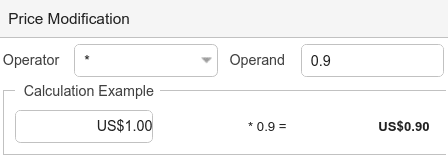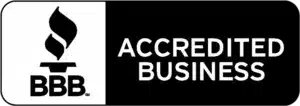Price rules are one of the ways you can apply changes to prices without having to use separate price groups or promotions. This is great if you want to apply a discount to your staff on everything in the store. However, we recommend using our promotions feature to create and manage specials and discounts. For more information on promotions, please visit our Creating Promotions manual page.
Creating a Price Rule

Begin by going to the Price Rules screen by navigating to Promotions > Price Rules. Then, click on the +New button. In this screen, you will see various options for conditions, modifications, and period of validity.
Give your new price rule a Name, Assign it to an Assortment, and Price Group. Make sure you also specify a minimum quantity. This determines how much of a certain product (determined in the conditions field) the person must purchase to trigger the price rule.
Conditions

Next, determine the conditions you wish to have for this rule to take effect. You can have it only apply to a certain Product, Product Tag, or a Commodity Group of products. If desired you can have it apply to a Customer Group as well.
For information on customer groups, visit our Create Customer Group Manual Page. You may need to add a button for that customer group to the terminal as well. Information on creating and adding buttons to the terminals can be found on our Create POS Buttons / Button Configuration manual page.
Price Modifications

Within the Price Modification box, you have the ability to determine how you want the prices of the products to change.
Using the Operator, you can choose to multiply, subtract, use a percentage or even add to a price. The Operand will be the factor or amount you wish to use.
For example, when taking 25% off the price of products the operator is set to % and used an operand of 75. The reason we have set this at 75 and not 25 is because Korona will only be charging a percent of the price of a product. It will not remove a percent from that product. You can test the results of the operator and operand by using the Calculation Example field.
Period of Validity

In this section, you can determine the Dates and specify the Time which this rule will take effect on.
Date: What month and day you would like this to take affect
Time: What time of the day you would like this to occur on or between
Interval: How long you would like this price rule to run for
Example: Singular(one time only), Daily, Weekly or Monthly
Interval Parameter: This is specifying what day of the week or month you would like the price rule to be recurring on.
Example: The Monthly interval option gives you 1-31 choices. so if you chose number 15 it would be the 15th day of every month.
Example: For the weekly interval you can select a number between 0-6 and that defines what day of the week your price rule will run on:
0 = Sunday
1 = Monday
2 = Tuesday
3 = Wednesday
4 = Thursday
5 = Friday
6 = Saturday
Use at the Terminal

Now that we’ve created our price rule. Let’s take a look at an example of how it would be used. This example assumes that the price group, customer group, and buttons have been created and assigned to the terminal.
The cashier begins by ringing up the order normally. They then assign the customer group “Staff” to the order by pressing the Staff Discount button. From there, they proceed to cash out the transaction.
Notice on the receipt how each item is now only being charged at 75% of its original price. This is because of the staff discount Price rule that was created earlier. The cashier proceeds to take payment and the transaction is finished normally.


